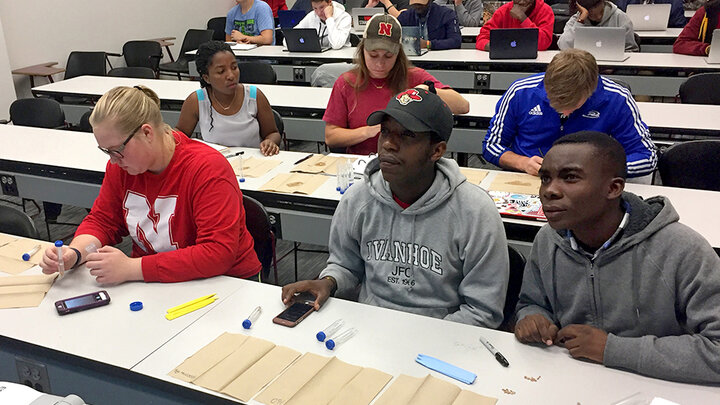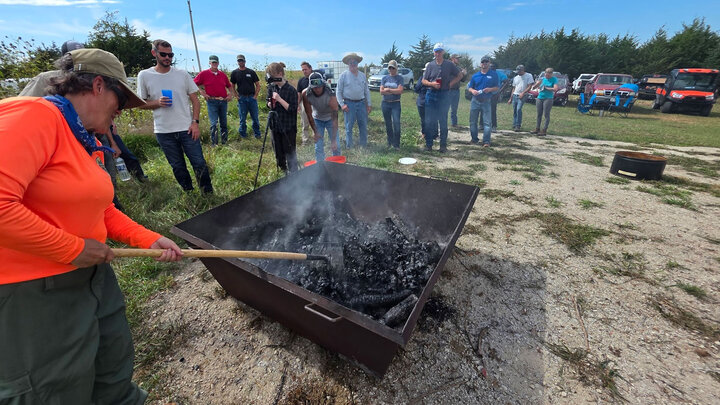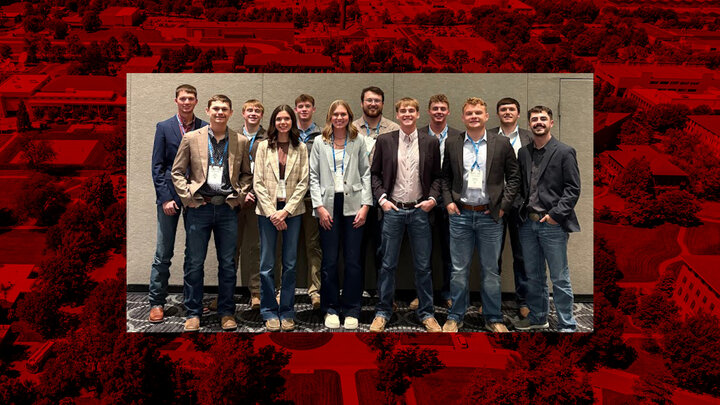‘Reading-to-learn’ approach can improve science literacy
“Teaching faculty in the Department of Agronomy and Horticulture are a lot like farmers who are motivated to continually apply new approaches to their work,” Professor Don Lee said.
According to Lee, a farmer might determine the impact of their new approach by measuring the yield of their crop. Teachers, likewise, need to measure the impact of a teaching approach on the learning and growing capabilities of their students.
Several teaching faculty in agronomy and horticulture have recently shared some of these new approaches to teaching and how they measure learning impact.
Brian Waters, an associate professor in plant breeding, genetics and molecular physiology, developed a series of questions that guide students to develop their ability to find and interpret key information from a research article he specifically selected for Agronomy/Horticulture 131, Plant Science.
Early in the semester Waters had students do an experiment and a write-up of the results, based on written instructions. Students were allowed to revise the write-up using instructor feedback. Later in semester, they were given a reading/writing assignment in which they studied a scientific journal article written in the same format as the experiment write-up.
The reading/writing assignment was to read a journal article and answer 20 questions based on Science Literacy Learning Objectives from a 2013 publication by J. Krontiris-Litowitz:
• Understand the genre, organization, structure and style of peer-reviewed journal articles
• Identify the components of the scientific method in journal articles
• Extract information from journal articles
• Interpret and explain the experimental protocol and its alignment to the hypothesis
• Identify and critique the controls of a study
• Interpret and explain the results presented in graph, table, or text
• Make inferences or conclusions and justify them with data from the article
• Evaluate or critique the results or conclusion and justify the position
• Build personal knowledge and understanding
Waters believes this “reading-to-learn” teaching approach will improve students’ science literacy. “The questions are designed to help students notice how the article is written, what goes into each section and really gain awareness of how scientists communicate with each other,” Waters said.
The measurement of this approach was administered through an informal survey given by Waters. The Plant Science students rated the approach as highly effective. The students commented that it was challenging, but they liked it. They felt it was really interesting to read a scientific journal article—a first for many—and the questions helped them identify key points to better understand the material.
“I wanted students to study this format so when they go to write a lab report or experiment write-up again in a later class, they have an example to work from,” Waters said. “I also wanted students to get a feel for where scientific ‘facts’ come from, which is the primary literature.”
He will use this teaching approach again this fall semester in Plant Science, but he wants to give the assignment earlier in the semester. A different article will be chosen to correspond and align with what the students are learning at that time, but the overall approach will remain the same.
Teaching Impacts in Agronomy and Horticulture is a series this summer, highlighting teaching faculty and learning approaches in the Department of Agronomy and Horticulture, College of Agricultural Sciences and Natural Resources.




